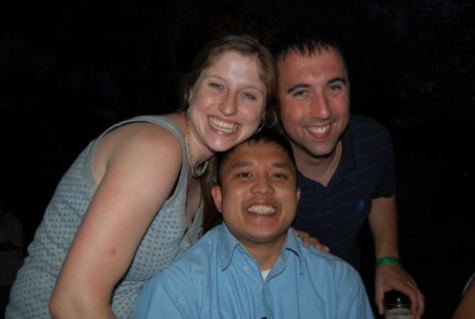School of Music awaits funds to build
Published Mar 29, 2012
The new Library Commons. Colby Hall. The Greek.
All of these areas await university-funded renovations, according to an email sent by Chancellor Victor Boschini last month. But the School of Music’s plans for new facilities are at a standstill — they must rely on private donations.
The TCU master plan totals $80 million including the construction of a “music village” spanning across one city block, or 120,620 feet, according to the master plan brochure.
Plans for the new facilities were in a “silent phase” for a few years as the department determined the likelihood of receiving large private donations, director of the School of Music Richard Gipson said. In November, the Board of Trustees officially approved the plans.
Although many people have indicated their willingness to help, the department awaits a multi-million-dollar “lead gift” to kick-off their fundraising campaign, said Scott Sullivan, dean of the College of Fine Arts.
“It is a very challenging fundraising project,” Sullivan said. “$80 million is half of what the west side of the football stadium cost. That’s a lot of money to be raised.”
Gipson said it was understandable that the university could not help fund the project.
“They’ve got a lot of mouths to feed, like the nursing school, business school, new library,” Gipson said. “All those things take resources.”
Gipson said he did not know how long the fundraising would take, but that it would be a long process. The department has sought donations from various foundations, corporations and individuals in the community.
But the new facilities — what the department calls a “bold and attainable vision” — are much needed for a program of its caliber, Gipson said.
With about 300 undergraduate students, more than 250 performances a year and around 800 community residents involved in various music education programs, the facilities simply could not support the magnitude of the department, Gipson and Sullivan said.
“The facilities that worked in 1995 don’t work now,” Sullivan said.
Right now, the School of Music is spread across 7 buildings, including classrooms in Foster Hall and an opera annex by McDonald’s. Consequently, logistics were tricky and detrimental to the cohesion of the department, Sullivan said.
With the new “music village,” everything would be in a central location.
Because the Department of Theatre and School of Music shared Ed Landreth Hall, many complications arose with overlapping practices and performances, Sullivan said. “Noise-bleed” is a common occurrence.
“You can be in the Bushman Theater in a play in a romantic, quiet love scene and hear a brass band playing in Ed Landreth,” he said.
When a play was performed in Ed Landreth Auditorium or events such as the Schieffer Symposium or Honors Convocation occurred, music groups often had to move off campus to practice, Sullivan said.
An “acute” problem for students is the number of practice rooms, Gipson said. The 27 practice rooms across three buildings are the “absolute bare minimum” to accommodate around 300 musicians, he said.
During a tour of the School of Music during the afternoon on a Wednesday, all 10 practice rooms in Ed Landreth were full and had students waiting in the hallway. That, Gipson said, was very typical.
“There is simply not enough space to easily accommodate the number of people who need to practice and rehearse on a regular basis,” said sophomore music composition major Garrett Wingfield. He said the constant struggle to find a space deterred him from practicing.
While the search for practice rooms was common, sophomore music education major Bojan Gutic said finding music stands was just as difficult. In the past, students had resorted to balancing their music in the branches of decorative trees, he said.
Gipson said the quality of the teaching and music program was exceptional, but that was sometimes not enough for prospective students.
“I can categorically state that students come here in spite of our facilities,” he said.
The university’s band room is smaller than most high school band rooms, comfortably holding around 30 people and their instruments, based on Gipson’s approximation. The marching band, he said, can barely squeeze in to the room.
“Our challenge is having people recognize that the arts compete for skilled students,” Sullivan said. “If we don’t have good facilities, good facility and financial aid, we can’t attract the best students. It’s not like English, where students just come.”
If it had more space and better facilities, Gipson said he thought the department would be able to compete with other top-tier music schools worldwide.
“What’s exciting about the new building is thinking what it might be like if we had facilities that really supported and propelled our program,” he said.



